A top-notch Chinese restaurant with a Michelin one-star rating, located within the Mandarin Oriental Hotel in Taipei. The elegantly designed restaurant features a skilled culinary team that meticulously crafts creative Chinese dishes using locally sourced Taiwanese ingredients.
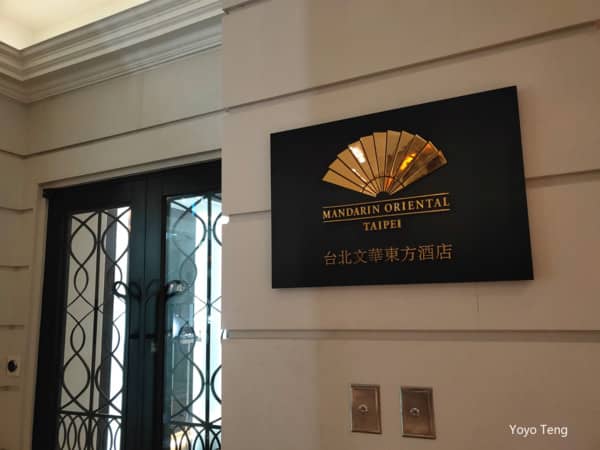
We arrived at Mandarin Oriental, Taipei in the afternoon. First, we indulged in an exquisite and leisurely afternoon tea at the opulent The Jade Lounge.

The Mandarin Oriental Hotel, with its exquisite architectural charm and artistic ambiance, has always been my favorite hotel in Taipei. It’s practically a romantic haven designed specifically for women.

We booked a reservation at Ya Ge, located on the 5th floor of the hotel. Although the suites at Mandarin Oriental are temporarily closed due to the pandemic, all the restaurants are still operating as usual. You can directly access the restaurant from the side door.
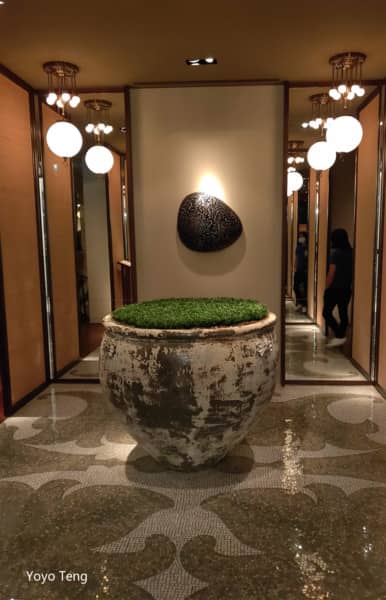
Speaking of the Mandarin Oriental Hotel, every floor, from floor to ceiling, and even the decor, is meticulously designed. Depending on the hotel’s theme, each floor presents a different style. The elegant Chinese restaurant, Ya Ge, is located on the third floor of the hotel. I spent quite some time admiring the intricate floor tiles alone.
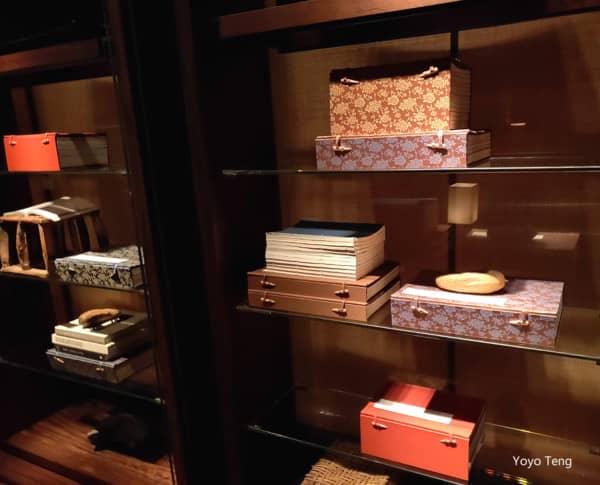
The renowned Chinese restaurant, Ya Ge, has consistently held the prestigious Michelin one-star rating in the Taipei Michelin Guide for two consecutive years (2019 and 2020). Interestingly, it is actually a Cantonese cuisine (粵菜) restaurant. The entire ambiance of the restaurant exudes sophistication, setting it apart from typical dining establishments.
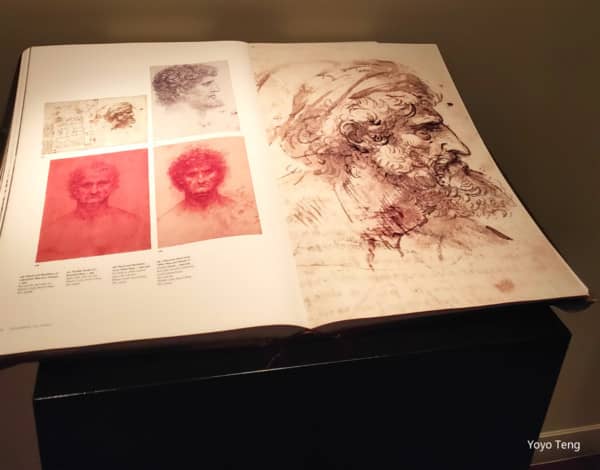
Walking in from the entrance, you encounter a succession of antique furniture and calligraphy. The fusion of Eastern and Western elements creates an atmosphere brimming with artistic flair, adorned with numerous philosophical and literary antiquities.
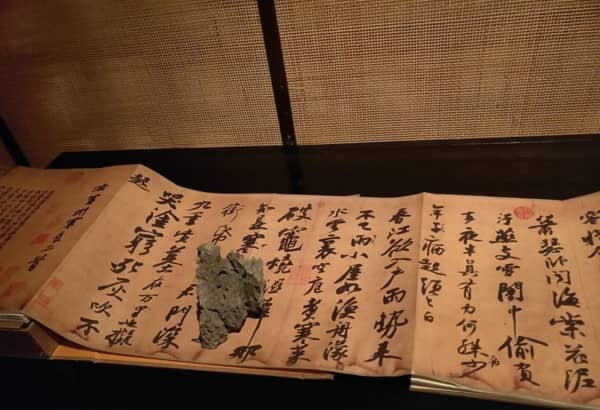
The beauty shared between calligraphy, music, traditional opera, and dance lies in the fluidity of strokes, the rhythm within lines and columns, and the poetic and artistic essence that permeates the entire composition.
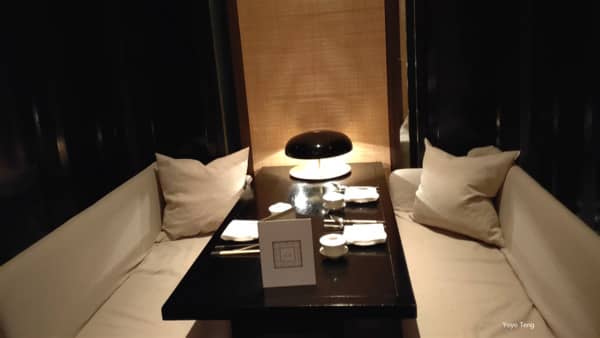
Unlike the typical round tables found in Cantonese restaurants, Ya Ge’s private dining rooms are designed for 4 to 6 guests, exuding an urban, laid-back, and stylish lounge vibe.
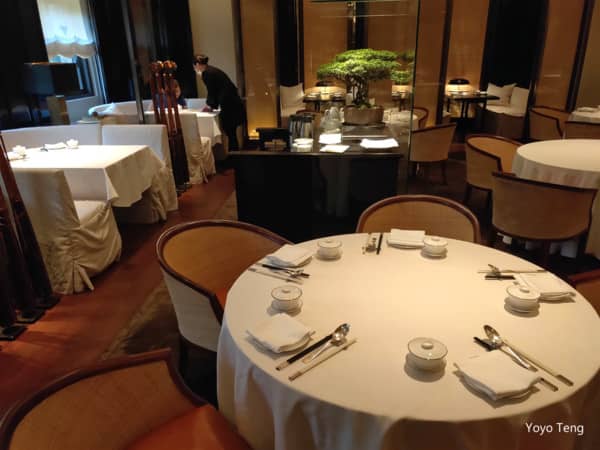
Apart from the regular dining area, Ya Ge offers 5 spacious private dining rooms, each accommodating up to 20 guests.
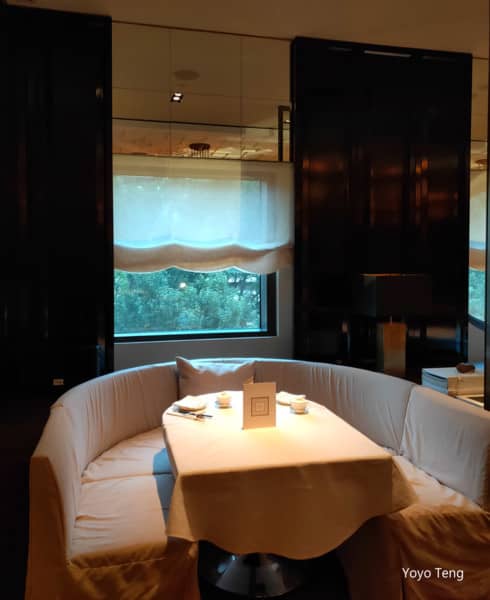
These private regions are ideal for hosting business events, family gatherings, or social banquets. Not only is the food delicious here, but you can also take pictures from any corner, and every shot turns out beautifully. Today’s purpose is simply to relax and indulge in the reward of good food.

Every time I enjoy Chinese cuisine, I can’t do without my favorite chrysanthemum pu-erh tea. Interestingly, Eastern people tend to have slender figures, perhaps due to our penchant for tea during meals. The service staff brings over a beautifully crafted Cantonese-style teapot, which is round and chubby, made of white bone china.
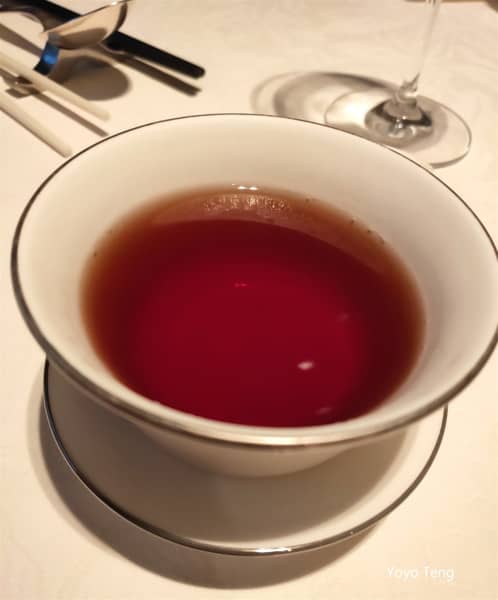
In an exquisite pure white cup rests a brew of exceptional Chrysanthemum Pu-erh tea. Taking that first sip before the meal, it’s as if the entire experience unfolds.
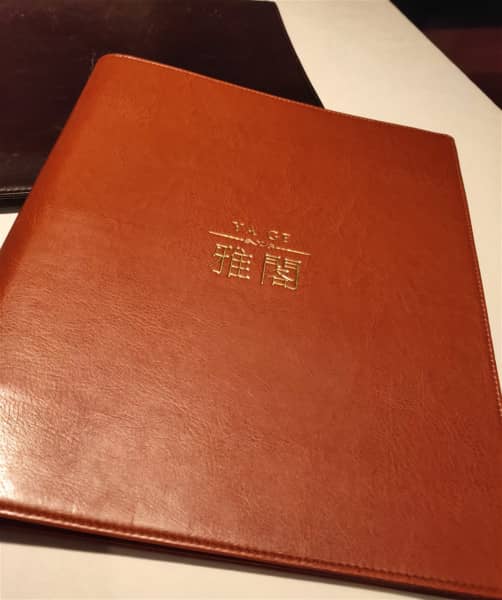
The menu is curated by Chef Xie Wen, who boasts nearly 50 years of culinary experience and hails from the renowned Hong Kong restaurant, ‘Fook Lam Moon.’ With a rich foundation in traditional craftsmanship, Chef Xie masterfully interprets the purest essence of each dish.
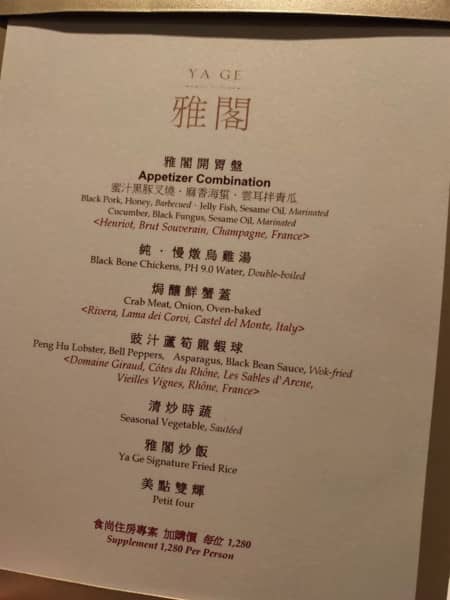
Guided by his expertise, the culinary team skillfully utilizes local Taiwanese ingredients to meticulously prepare both Chinese delicacies and Hong Kong-style dim sum. This unique dining experience is part of a stylish accommodation project, complemented by a thoughtfully designed evening set menu.
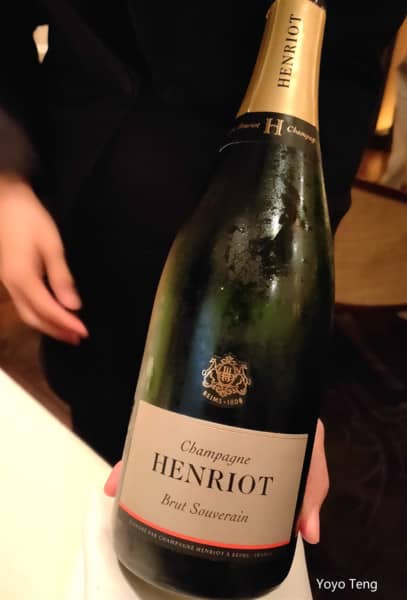
And if the mood strikes, consider enhancing your meal with three wine selections recommended by the sommelier. To kick off the culinary journey, the first pre-dinner libation is Champagne Henriot—a brand founded in 1808. Their vineyards span an impressive 25 hectares in the esteemed Cote des Blancs region of France.

This champagne, beloved by royalty in the Netherlands, Austria, Hungary, and beyond, matures slowly after bottling. It rests in the natural limestone cellars of the Reims area, precisely 18 meters deep, at a cool 11°C, with humidity levels maintained at 98%.
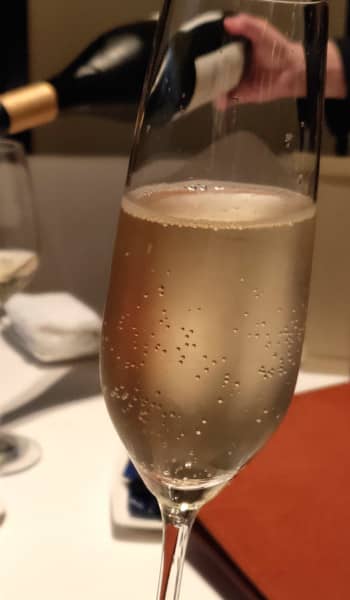
The golden-hued wine exudes aromas of honey, apricot, and fruity gummies. Its finish carries a subtle hint of slow-cooked orange, making it perfectly suited for refreshing, chilled enjoyment.
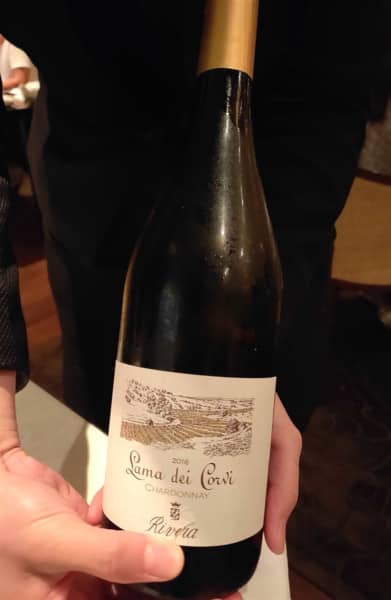
Paired with another white wine, this selection is crafted from handpicked grape fruits grown in the Lama dei Corni Golden Slope Vineyard. It exudes abundant aromas of ripe pears, apples, and toasted bread.

Made from the August-harvested Chardonnay grapes, after undergoing fermentation in oak barrels, it matures for eight months in the same barrels. The result is a wine with a golden hue reminiscent of rice ears, offering a gentle and smooth drinking experience.
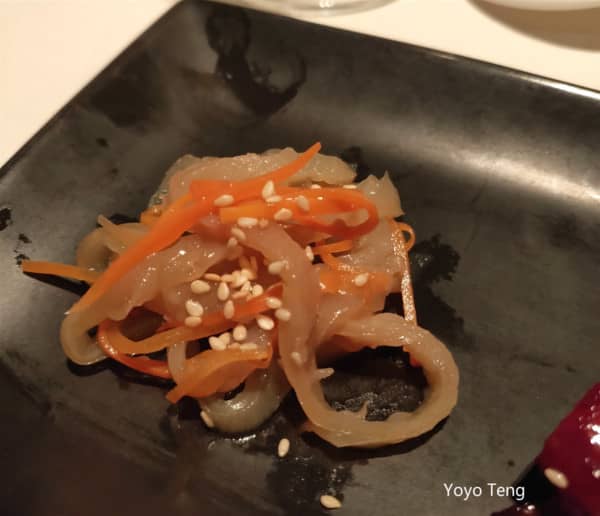
Sesame-Flavored Jellyfish Skin
Jellyfish skin is rich in collagen, boasts high nutritional value, and is low in fat and cholesterol. For every 100 grams, jellyfish skin contains approximately 30 to 40 calories. I thoroughly enjoy it as a chilled appetizer.
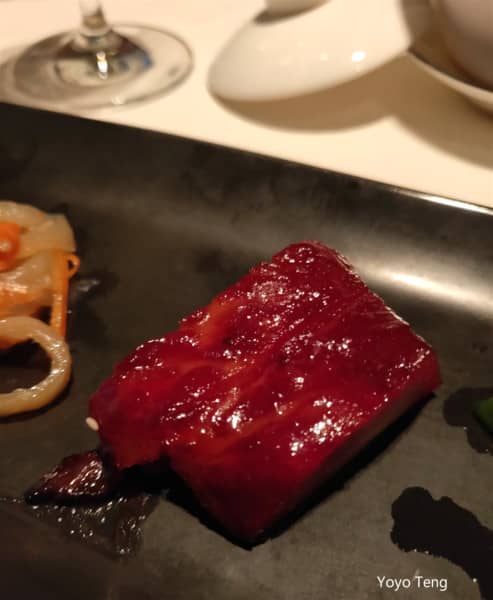
Crafted from locally sourced ingredients on Taiwan’s beautiful island, the honey-glazed black pork char siu is an authentic Cantonese culinary masterpiece.
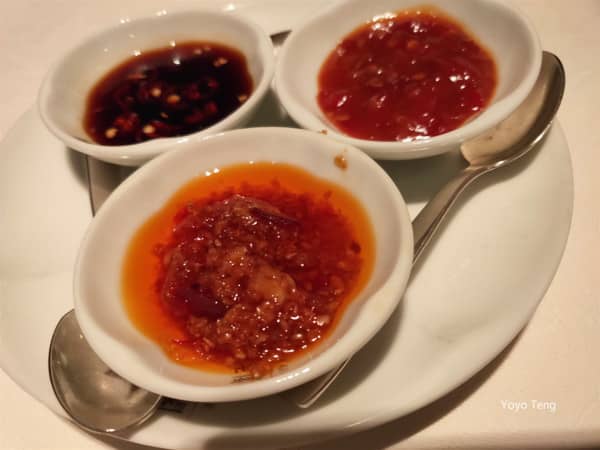
Next, a trio of distinct spicy dipping sauces is presented. These include spicy bean paste, chili oil with whole peppercorns, and the classic traditional chili-infused oil. They perfectly complement this exquisite premium char siu pork.
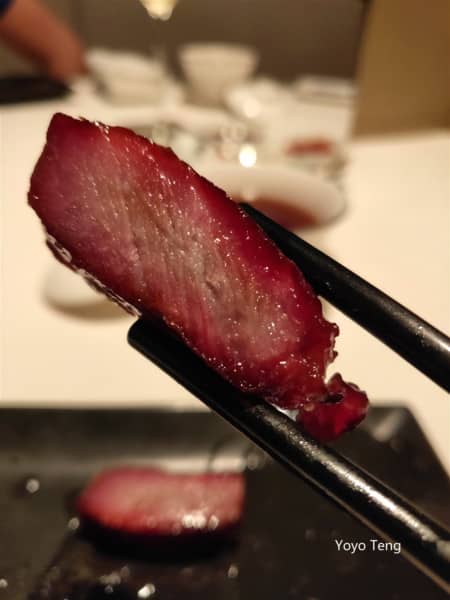
Perhaps the most expensive piece of char siu I’ve ever tasted, this succulent pork loin is skewered and roasted within the entire pig’s belly. Fortunately, the meat is firm and flavorful.

Pure, Slow-Simmered Black-Bone Chicken Soup: Reminiscing about my postpartum days, I used to rely on sipping chicken essence to rejuvenate my body. Back in my husband’s hometown in Changhua, my father-in-law raises his own chickens, and he crafts chicken essence using traditional methods.
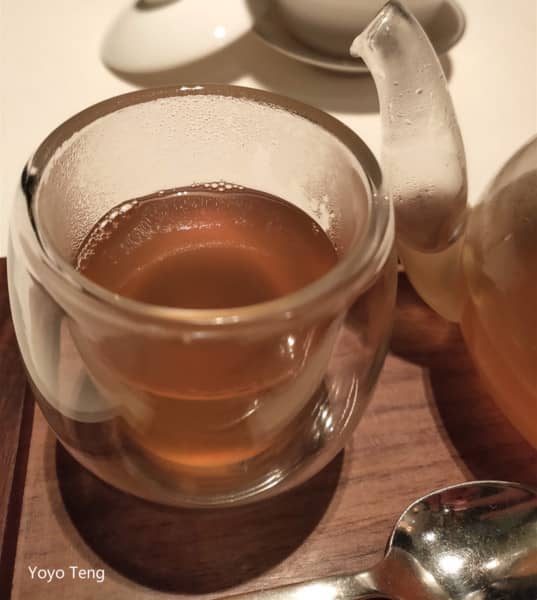
However, the chicken essence here undergoes meticulous filtering and slow simmering, resulting in a more refined texture. Just gazing at the transparent glass lid, adorned with rising steam, assures me that it’s freshly ladled onto the table.
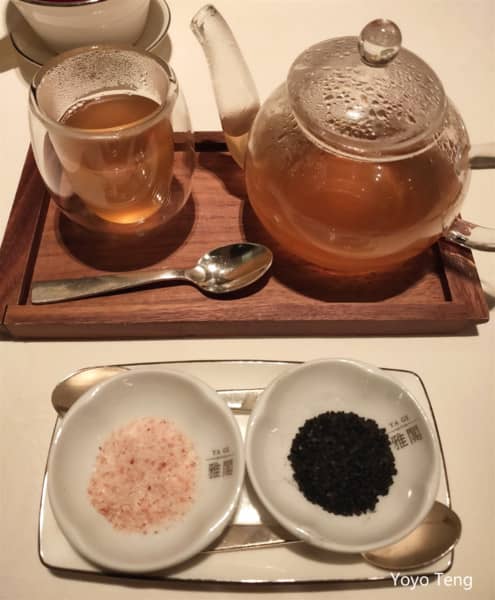
Paired with the Himalayan rose salt on the left and Taiwan’s local bamboo charcoal salt, this libation offers two distinct flavor profiles. For a more delicate experience, opt for the rose salt. However, if you’re aiming to replenish minerals while avoiding any greasiness, I recommend the healthy bamboo charcoal salt.
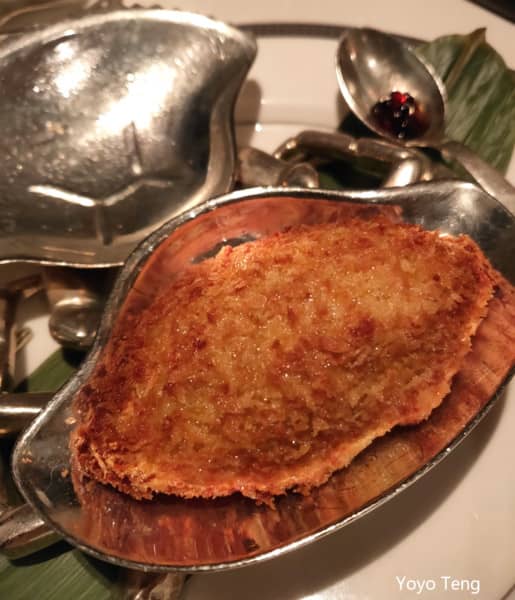
Baked Stuffed Fresh Crab Shell
Before indulging, take a moment to appreciate the pure silver vessel shaped like a crab .
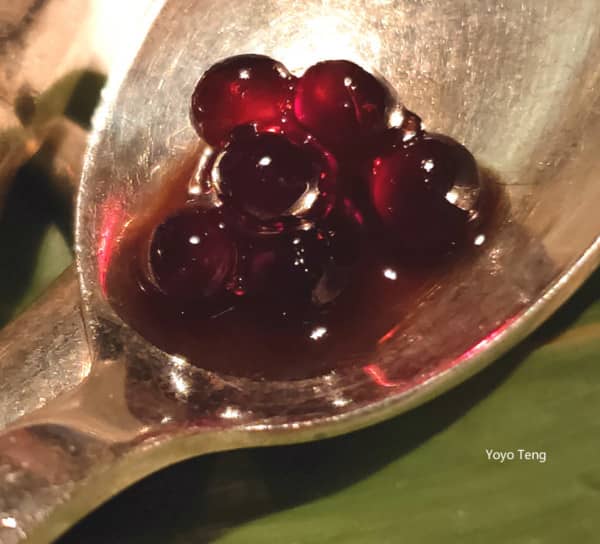
And notice those wine-red pearls on the spoon? Those are crab roe. Resembling a deep, translucent red wine, the nutritional value of these eggs should not be underestimated.
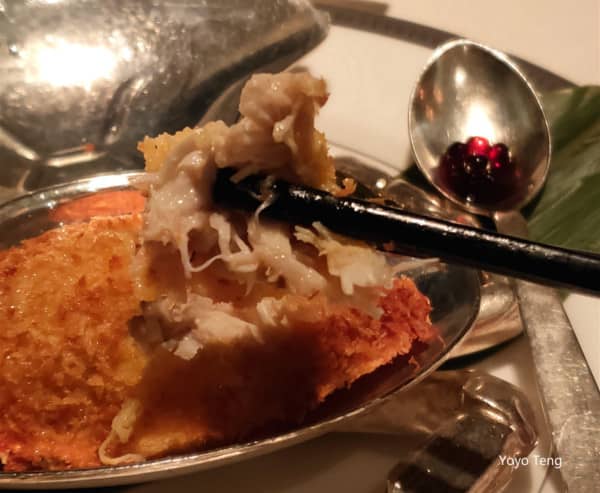
They carry a natural oceanic saltiness, and when paired with the crispy fried crab meat, the entire crab shell is filled with an abundance of finely textured, 100% firm crab meat.
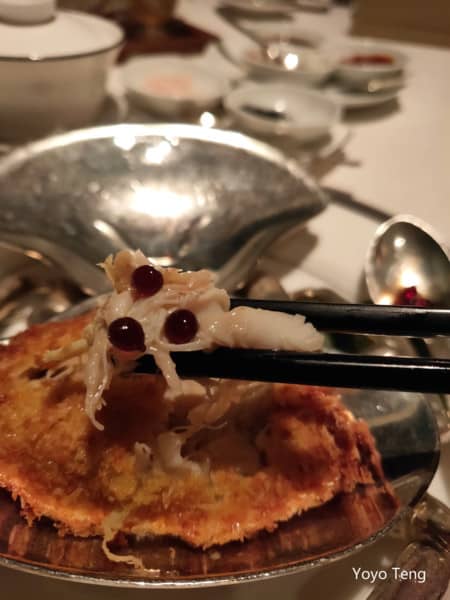
And as you take that first bite, the crab roe joins the symphony of flavors.
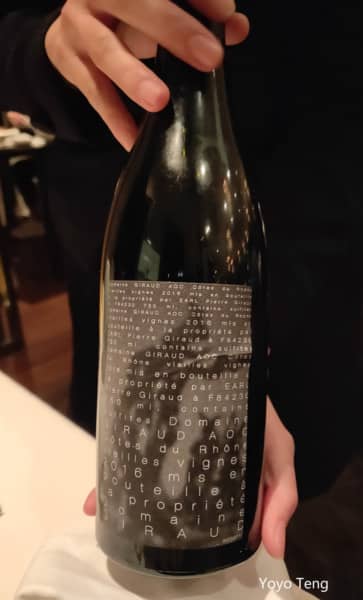
Domaine Giraud (Vieilles Vignes Côtes du Rhône 2017) exudes an intense aroma reminiscent of blackcurrant, black pepper, and floral notes. These fragrant elements intermingle with hints of black cherry, plum, and mint.

Drum Sauce Asparagus Lobster Balls
In Cantonese cuisine, shrimp balls are incredibly delicious! A signature dish at the Yagoku restaurant is their crispy shrimp balls coated with golden sand. This time, they’ve added a delightful twist by pairing them with tender asparagus stir-fried in a flavorful oyster sauce. What’s impressive is that even without white rice, it doesn’t taste overly salty.
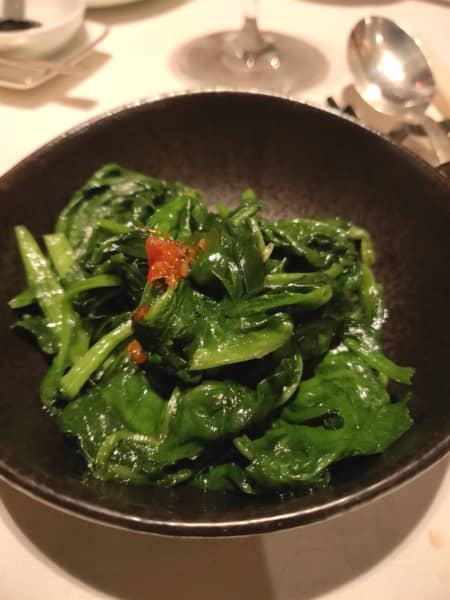
Stir-Fried Pea Shoots with Scallops
When it comes to enjoying leafy greens, stir-fried pea shoots are a delightful choice. And when paired with a savory scallop sauce, they become even more enticing. The tender-crisp texture of the pea shoots feels just right, offering a refreshing and light experience for both the stomach and taste buds.

Ya Ge Fried Rice
Every mouthful exudes opulence, living up to its Michelin-starred reputation at the Mandarin Oriental, Taipei. This extraordinary dish combines fragrant Thai jasmine rice with Japanese Koshihikari rice, stir-fried over high heat to achieve a delightful balance of tenderness and stickiness. Luxuriously adorned with premium ingredients like lobster meat, Japanese scallops, flying fish roe, and Donggang sakura shrimp, it’s a symphony of flavors. The quick stir-fry with tomatoes, garlic sprouts, and Yilan scallions ensures a harmonious blend of textures and tastes.
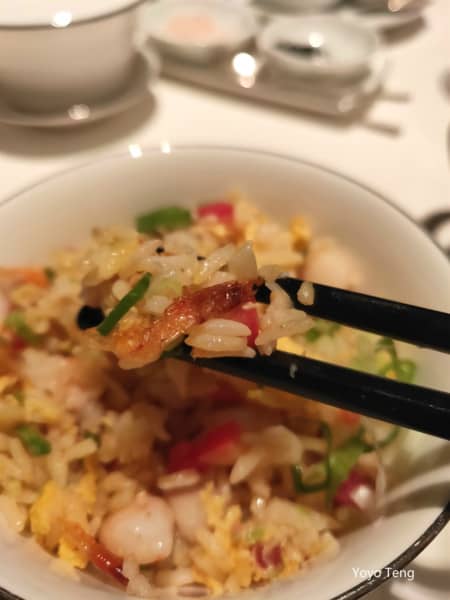
Taste Buds Journey Through the Realm of Culinary Excellence. Even a simple fried rice dish reveals boldness and grandeur.

Bamboo Charcoal Custard Lava Buns
These delightful buns, commonly found in Cantonese teahouses, are a harmonious blend of sweet and savory. While these buns typically have a white exterior, this time, they’re crafted from bamboo charcoal, resulting in a striking black hue.
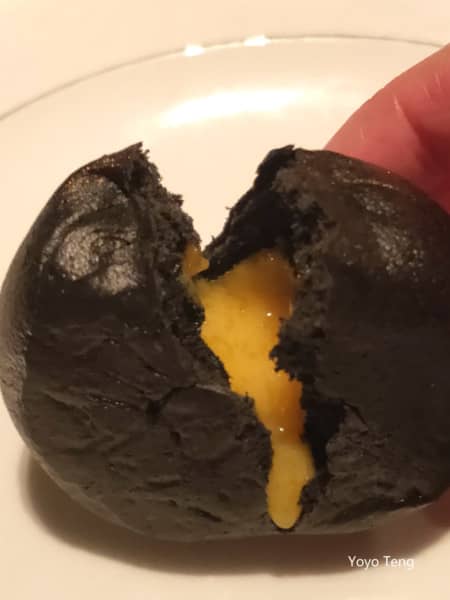
The luscious filling is made by combining salted egg yolks with plant-based butter and sugar. When steamed, the custard flows out like molten lava, creating a tantalizing contrast.
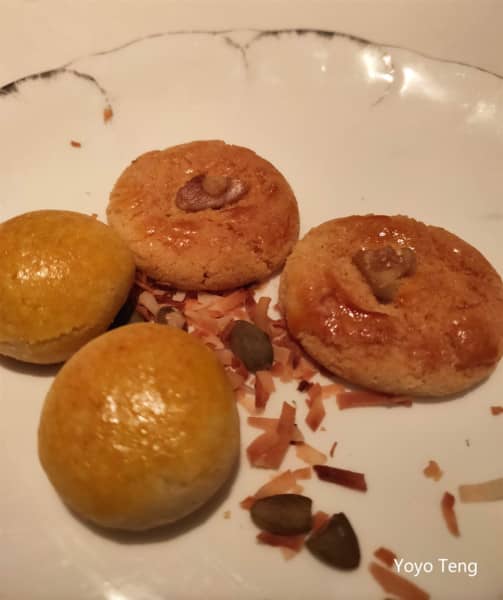
Hong Kong-Style French Toast
Crispy, sweet, and nutty layers of milk bread drizzled with condensed milk.
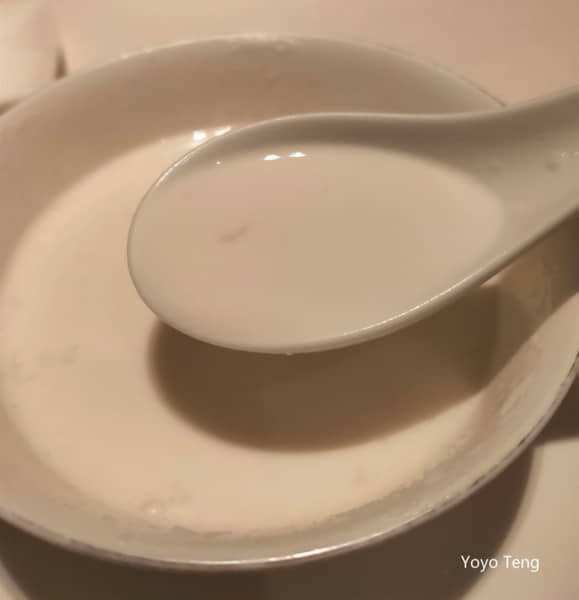
Egg White Almond Tea
This delightful tea combines the sweetness of southern almonds (also known as sweet almonds) with a touch of northern almonds (bitter almonds). Some even use the larger and superior Longhuang southern almonds. The sweet flavor of these almonds is not only pleasant but also beneficial for lung health. Rich in protein, this concoction provides a nourishing treat.